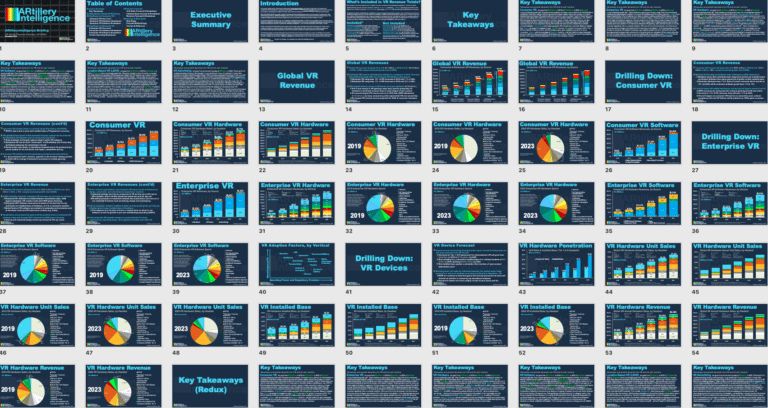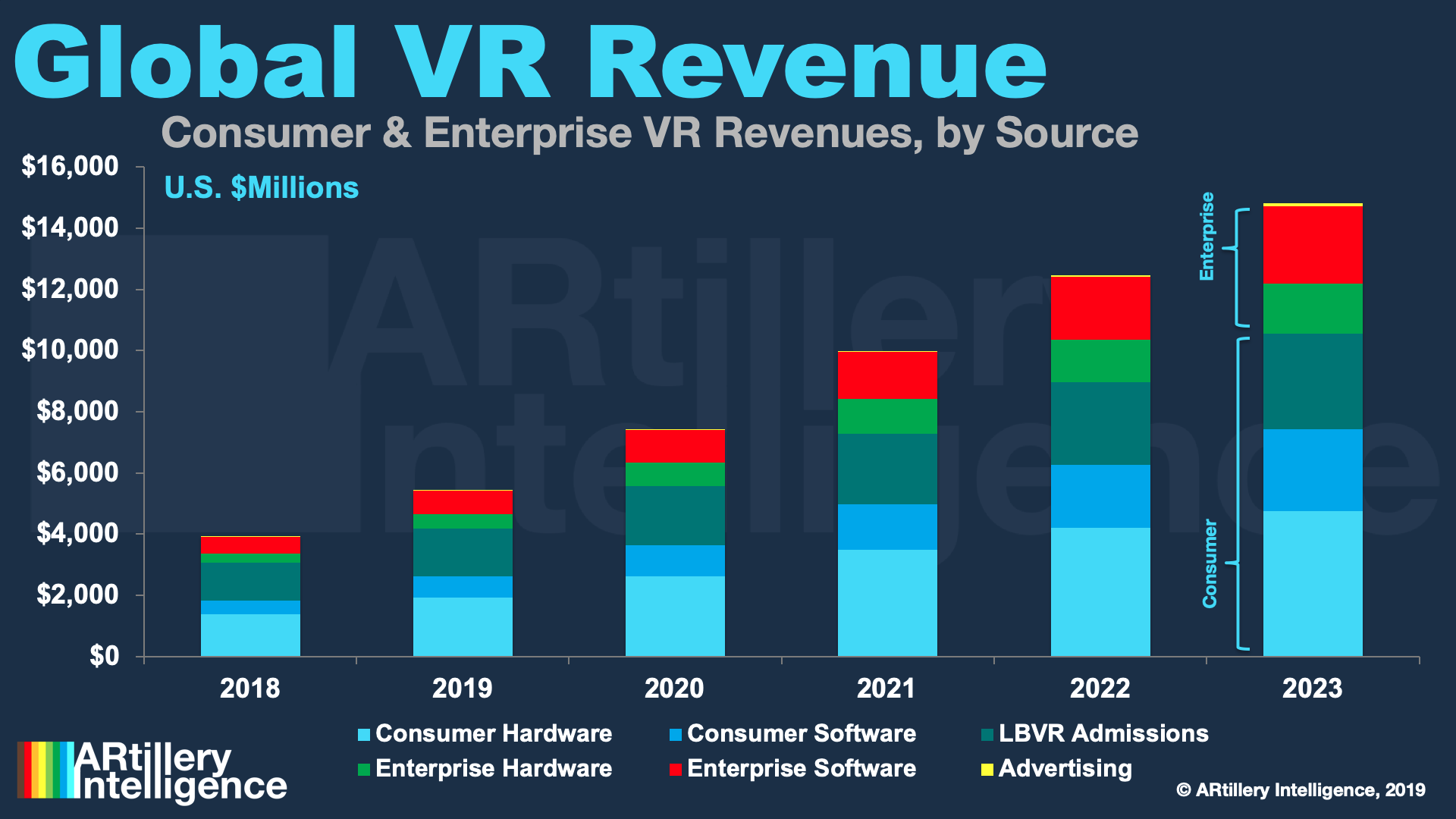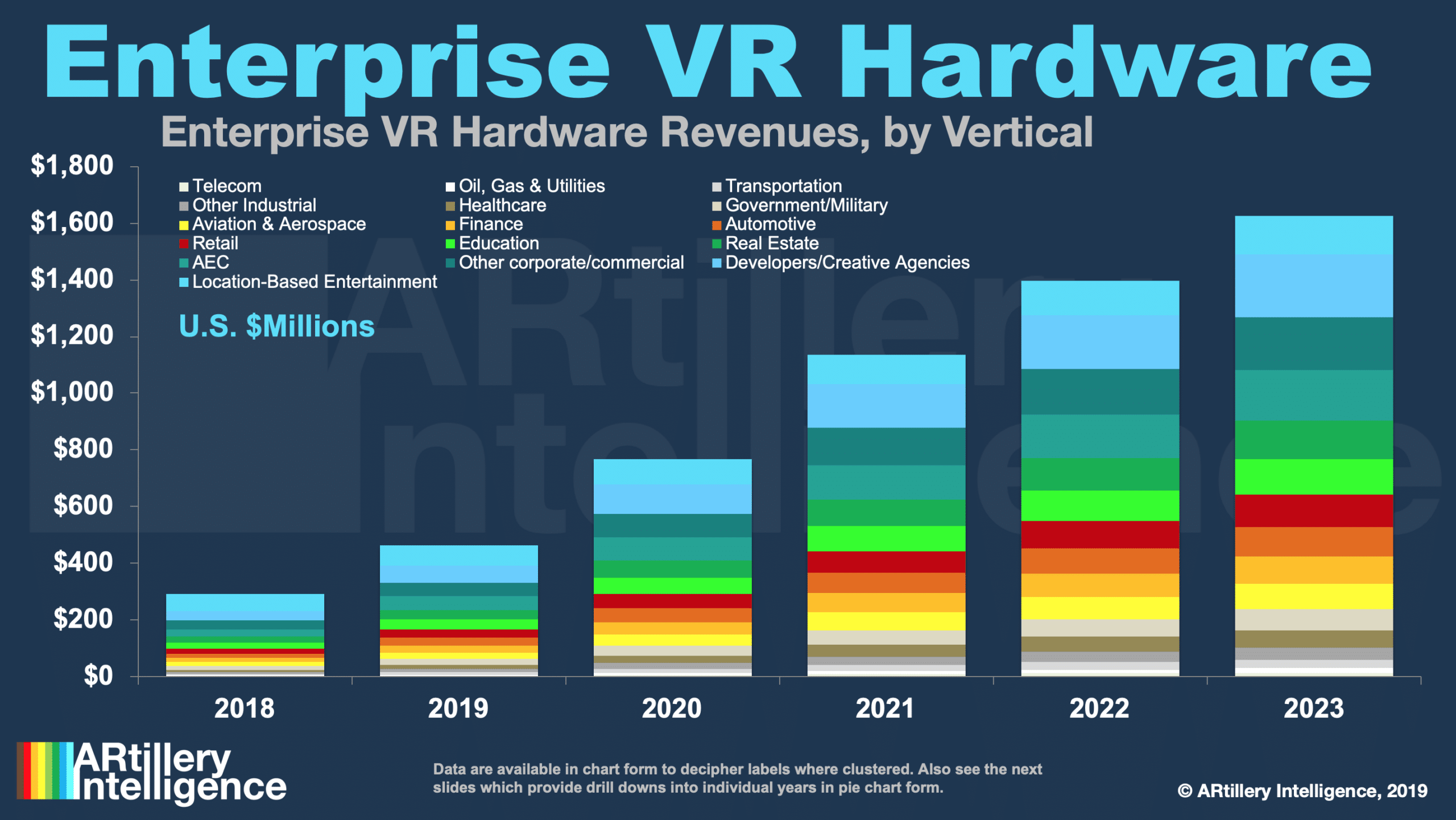
“Behind the Numbers” is AR Insider’s series that examines strategic takeaways from ARtillery Intelligence data. Each post drills down on one topic or chart. Subscribe or login to access the full library and other knowledge-building resources.
VR continues to show early-stage characteristics, including erratic interest and investment. But how big is it, and how big will it get? AR Insider’s research arm ARtillery Intelligence has quantified the revenue position and outlook, resulting in the fourth and latest wave of its Global VR Forecast.
Built from daily market coverage, insider interviews and 15-years of market-sizing experience, ARtillery Intelligence has constructed disciplined and independent forecasting models. The analysis is segmented into several revenue categories and the methodology can be seen here.
So what were the results? At a high level, the firm projects VR revenues to grow from $3.9 billion last year to $14.8 billion in 2023, a 31 percent CAGR. That includes lots of moving parts and sub-sectors including consumer, enterprise, hardware, software, advertising and LBVR.

Drilling Down on Enterprise VR
Drilling down into one of those segments, how does enterprise VR revenue stack up? ARtillery projects it to grow from $829 million in 2018 to $4.26 billion in 2023, a 39 percent compound annual growth rate. This includes VR hardware and software spending from enterprise buyers.
Hardware is straightforward, consisting of headset purchases (usually enterprise VR bundles). Software includes apps for things like industrial design and training. These are apps that run on VR headsets so their revenue growth correlates to the enterprise VR hardware installed base.
We raise that fairly obvious point to differentiate it from other enterprise software spending that isn’t as tied to headsets on a one-to-one basis. Specifically, this forecast tracks enterprise software for VR experience creation. This category is best exemplified by its market-sare leader, Unity.
Like in consumer markets, software’s share of revenue will grow over time, as it builds upon a larger installed base of hardware. This happens as a function of more in-market units on which to run software, as well as growth in per-user software/app spending (ARPU) as VR demand grows.

Product-Market Fit
Unlike AR, which will have specialized hardware optimized for enterprise functions, (e.g. Hololens), enterprise VR will at least partly utilize the same hardware used in consumer markets. Availability and economics of that hardware (e.g. Oculus pricing) will lower enterprise VR adoption barriers.
As for enterprise VR use cases, it won’t add as much value in industrial settings (where AR shines) as it does in corporate contexts such as data visualization and industrial design. Training will be a key use case in retail and industrial segments and is already gaining meaningful traction.
As for vertical segmentation, top enterprise VR adopters include architecture & design, automotive, and entertainment (experience creation). Vertical-specific AR adoption hinges on product/market fit; buyer urgency/need; spending power; and regulatory freedom (see graphic below).
The above figures also include location-based VR (LBVR). This includes VR hardware purchases and software licenses which are counted in this forecast as enterprise VR spending. The admissions revenues of those facilities are conversely counted as consumer spending.

Cautiously Optimistic
Panning back, ARtillery Intelligence’s position on VR revenue growth is best characterized as cautiously optimistic. Scale will come, but slower than many industry proponents have thought, due mostly to the pace of adoption and other signals ARtillery Intelligence tracks.
In fact, you may notice that VR revenue projections in outer years are lower than other figures you may have seen. They’re also lower than ARtillery’s past estimates, as it adjusts to market signals. This is common in industry forecasting, as market watchers course-correct to market variables.
Stay tuned for more forecast tidbits and insights over the coming weeks. Meanwhile, find out more about the report methodology/inclusions or access the entire thing here. There will be lots to unpack as the VR market unfolds with a combination of expected and unexpected outcomes.
For deeper XR data and intelligence, join ARtillery PRO and subscribe to the free AR Insider Weekly newsletter.
Disclosure: AR Insider has no financial stake in the companies mentioned in this post, nor received payment for its production. Disclosure and ethics policy can be seen here.
